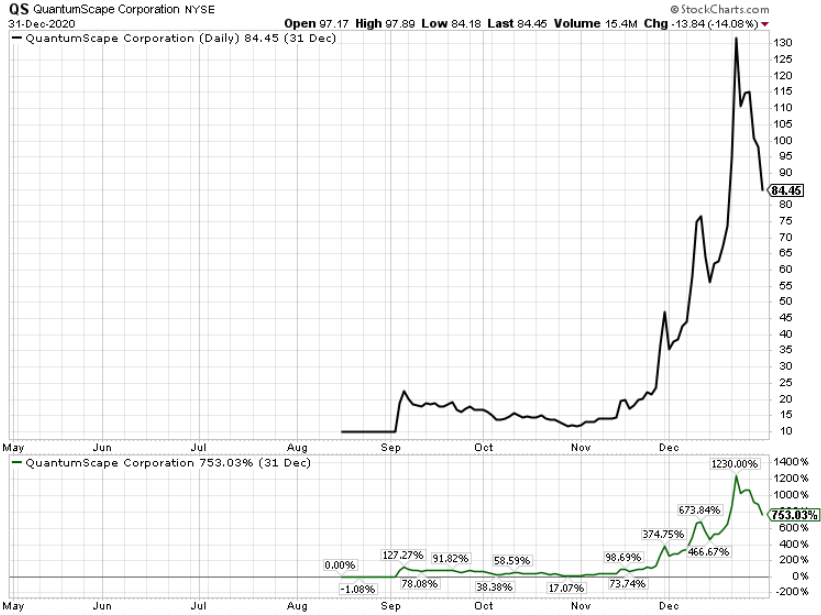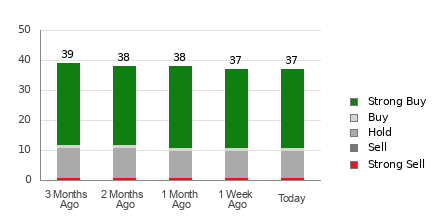Vanguard exchange-traded funds (ETFs) are some of the most popular, low-cost ways to achieve diversification across different sectors or market themes.
The ultra-popular Vanguard S&P 500 ETF (NYSEMKT: VOO) has $1.08 trillion in net assets and just a 0.03% expense ratio. It is one of the cheapest ways to invest in the S&P 500.
But there’s another low-cost Vanguard Fund that is beating both the S&P 500 and the Nasdaq Composite year to date — the Vanguard Mega Cap ETF (NYSEMKT: MGC).
This fund has a slightly higher expense ratio at 0.07%, but it is a negligible difference. For example, $10,000 invested in the Vanguard Mega Cap ETF incurs just $4 more in annual fees than the Vanguard S&P 500 ETF. Today’s era of low fees is incredible, considering some brokerage commissions were $7 per transaction just a decade ago.
Here’s why the Vanguard Mega Cap ETF could continue beating the S&P 500 and Nasdaq Composite over the long term.

Image source: Getty Images.
A low-cost way to (potentially) beat the market
Buying a Vanguard fund to participate in the market for a low fee has plenty of benefits. But finding a Vanguard fund with low fees that can also beat the major indices is a whole different level.
The Vanguard Mega Cap ETF only has 207 holdings, compared to 503 for the Vanguard S&P 500 ETF. By concentrating in larger companies, the Vanguard Mega Cap ETF has higher exposure to growth sectors like tech and communications, consumer discretionary, and industrials than the Vanguard S&P 500 ETF, but less exposure to consumer staples, utilities, materials, and real estate.
Still, because such a large amount of the S&P 500 is allocated in the top holdings, the sector weights are very similar between the two funds.
|
Sector |
Vanguard Mega Cap ETF |
Vanguard S&P 500 ETF |
|---|---|---|
|
Technology and Communications |
41.2% |
38.3% |
|
Consumer Discretionary |
14.1% |
10.3% |
|
Health Care |
12.2% |
12.3% |
|
Financials |
10.1% |
13.1% |
|
Industrials |
10% |
8.8% |
|
Consumer Staples |
4.8% |
6.2% |
|
Energy |
3.9% |
4.1% |
|
Utilities |
1.5% |
2.3% |
|
Basic Materials |
1.2% |
2.4% |
|
Real Estate |
1% |
2.2% |
Data source: Vanguard.
If you look at the list of individual stock holdings in each fund, you’ll notice that they are nearly identical. It’s just that the Vanguard Mega Cap ETF has slightly more exposure to each company because it essentially only invests in the 200 or so largest companies in the S&P 500.
Large growth companies have led the market higher in recent years
The Vanguard Mega Cap ETF has slightly beaten the S&P 500 and Nasdaq Composite over the last three years, but it has lagged behind the Nasdaq over the last five years. In turn, the Nasdaq Composite has underperformed the Nasdaq-100, which is made up of the 100 largest non-financial companies listed on the Nasdaq exchange. The Invesco QQQ Trust (NASDAQ: QQQ) is one of the largest Nasdaq-100 ETFs out there, so we’ll use it as a proxy for the index.

QQQ Total Return Level data by YCharts
The chart above does a good job of summing up market dynamics over the last five years. If you had invested in large-cap S&P 500 companies, you did very well. If you concentrated on the bigger S&P 500 companies, you did even better. If you targeted growth stocks, you did even better than that. And best of all, if you invested in the largest growth stocks, you probably crushed all the benchmarks.
Growth stocks, specifically mega-cap tech and tech-oriented companies that aren’t in the tech sector — like Amazon, Tesla, Alphabet, and Meta Platforms — have driven the market rally during this period. Although the Vanguard Mega Cap ETF is slightly more concentrated in these names than the Vanguard S&P 500 ETF, the Nasdaq Composite takes it to a whole new level, with around 50% concentration in the “Magnificent Seven” stocks — Microsoft, Apple, Nvidia, Amazon, Alphabet, Meta Platforms, and Tesla.
Know what you’re looking for
Investing isn’t just about finding winning stocks. It’s also about choosing a strategy that best aligns with your risk tolerance and interests.
If you think the largest companies in the S&P 500 will outperform the smaller ones, the Vanguard Mega Cap ETF could be a great fit for you. But if you think mega-cap tech will do even better, then the Invesco QQQ is probably an even better fit.
You may also think that mega-cap stocks have run too far too fast and are overvalued. In that case, none of these ideas would work.
The beauty of a product like the Vanguard Mega Cap ETF is that the fee isn’t high, and the fund’s structure is very simple — so you know what you’re getting into. It’s a good choice if you’re looking for broad-based exposure to the largest U.S.-based companies and want a little more concentration in growth themes than the S&P 500, but not as much as the Nasdaq Composite.
Should you invest $1,000 in Vanguard World Fund – Vanguard Mega Cap ETF right now?
Before you buy stock in Vanguard World Fund – Vanguard Mega Cap ETF, consider this:
The Motley Fool Stock Advisor analyst team just identified what they believe are the 10 best stocks for investors to buy now… and Vanguard World Fund – Vanguard Mega Cap ETF wasn’t one of them. The 10 stocks that made the cut could produce monster returns in the coming years.
Consider when Nvidia made this list on April 15, 2005… if you invested $1,000 at the time of our recommendation, you’d have $584,435!*
Stock Advisor provides investors with an easy-to-follow blueprint for success, including guidance on building a portfolio, regular updates from analysts, and two new stock picks each month. The Stock Advisor service has more than quadrupled the return of S&P 500 since 2002*.
See the 10 stocks »
*Stock Advisor returns as of May 13, 2024
Suzanne Frey, an executive at Alphabet, is a member of The Motley Fool’s board of directors. John Mackey, former CEO of Whole Foods Market, an Amazon subsidiary, is a member of The Motley Fool’s board of directors. Randi Zuckerberg, a former director of market development and spokeswoman for Facebook and sister to Meta Platforms CEO Mark Zuckerberg, is a member of The Motley Fool’s board of directors. Daniel Foelber has no position in any of the stocks mentioned. The Motley Fool has positions in and recommends Alphabet, Amazon, Apple, Meta Platforms, Microsoft, Nvidia, Tesla, and Vanguard S&P 500 ETF. The Motley Fool recommends the following options: long January 2026 $395 calls on Microsoft and short January 2026 $405 calls on Microsoft. The Motley Fool has a disclosure policy.
The views and opinions expressed herein are the views and opinions of the author and do not necessarily reflect those of Nasdaq, Inc.









